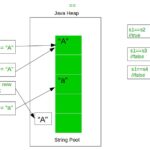Comparing data in SQL Server is a common task for database administrators and developers. Whether you’re tracking changes, identifying discrepancies, or synchronizing data between tables, choosing the right comparison method is crucial. This article explores various techniques for comparing data in SQL Server, focusing on the efficient and often overlooked EXCEPT operator. We’ll examine its advantages over traditional methods like LEFT JOIN, discuss potential drawbacks, and provide practical examples to guide you through the process.
Common Data Comparison Scenarios
Data comparison needs arise in diverse situations, including:
- Data Synchronization: Keeping data consistent across multiple databases or tables.
- Change Tracking: Identifying modifications made to data over time.
- Data Validation: Ensuring data integrity and accuracy.
- Auditing: Tracking data changes for compliance and security purposes.
Comparing Data with LEFT JOIN
A common approach to comparing data involves using a LEFT JOIN. This method returns all rows from the left table and matching rows from the right table. To identify differences, you compare corresponding columns using WHERE clause conditions. For instance:
SELECT st.Id, st.FirstName, st.LastName, st.Email
FROM dbo.SourceTable st
LEFT JOIN dbo.DestinationTable dt ON dt.Id = st.Id
WHERE dt.FirstName <> st.FirstName
OR dt.LastName <> st.LastName
OR ISNULL(dt.Email, '') <> ISNULL(st.Email, '');However, LEFT JOIN has a significant drawback: handling NULL values. Each column comparison requires an ISNULL check, leading to verbose and cumbersome code, especially with numerous columns.
SELECT st.Id, ...
FROM dbo.SourceTable st
LEFT JOIN dbo.DestinationTable dt ON dt.Id = st.Id
WHERE ISNULL(dt.Column1, '') <> ISNULL(st.Column1, '')
OR ISNULL(dt.Column2, '') <> ISNULL(st.Column2, '')
...; -- Repeating for each columnLeveraging the EXCEPT Operator for Data Comparison
The EXCEPT operator offers a more concise and efficient way to compare data. It returns all rows from the first SELECT statement that are not present in the second SELECT statement, effectively highlighting the differences. Crucially, EXCEPT implicitly handles NULL comparisons.
SELECT Id, FirstName, LastName, Email
FROM dbo.SourceTable
EXCEPT
SELECT Id, FirstName, LastName, Email
FROM dbo.DestinationTable;This simplified syntax makes EXCEPT especially beneficial when comparing tables with many columns.
SELECT Id, FirstName, ..., Column10
FROM dbo.SourceTable
EXCEPT
SELECT Id, FirstName, ..., Column10
FROM dbo.DestinationTable;Considerations When Using EXCEPT
While EXCEPT offers advantages, consider these factors:
- Performance: In some cases,
LEFT JOINmight outperformEXCEPT, particularly with large datasets. Analyze execution plans to determine the optimal approach for your specific scenario. - Column Order and Data Type:
EXCEPTrequires the same number and order of columns in bothSELECTstatements, and corresponding columns must have compatible data types.
Conclusion
The EXCEPT operator provides a powerful and elegant solution for comparing data in SQL Server. Its concise syntax and implicit NULL handling simplify the process, especially when dealing with numerous columns. By understanding the strengths and limitations of both LEFT JOIN and EXCEPT, you can choose the most effective method for your data comparison tasks, ensuring data accuracy and consistency. Consider performance implications and data type compatibility when making your decision. For many scenarios, EXCEPT offers a cleaner and more efficient approach to identifying data discrepancies.
